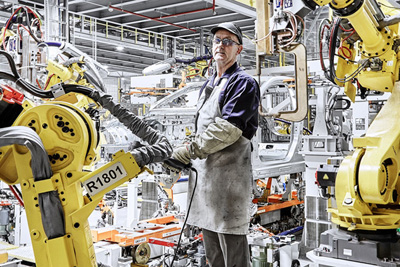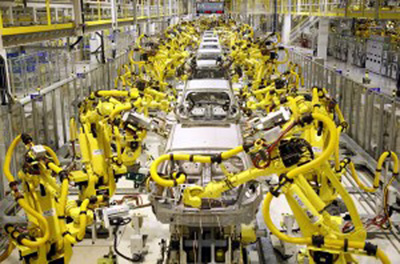Automotive
The utilisation of IT systems in the automotive industry has been an integral component for years; however, the past ten years have seen an exponential increase in this usage. Currently, all sectors of the automotive industry rely immensely on IT systems that have become an essential aspect of their operations.
In this present age, high-end CAD software is widely utilised for designing both internal and external automotive parts. Moreover, 3D printing is being utilized to produce prototypes promptly and efficiently based on those designs. The amount of data generated from this process is enormous, leading to the need to meticulously catalogue and securely store it.
In the production operation, each part included in the construction of a vehicle requires detailed recording and safekeeping, and when there is any specific concern, the relevant information can be utilised to facilitate a recall or update with accurate information pertaining to the vehicles that have the part fitted.
In addition, IT has impacted the relationship between dealers, original equipment manufacturers (OEMs) and customers. Just in time delivery has allowed a more cost effective operation and minimises the amount of storage space required for parts inventory at the manufacturing plant. However, an IT solution is also required for effective monitoring and control.
With the move to produce Electric Vehicles being mandated around the world, a new set of challanges and hurdles need to be overcome including integrating new supplies into the chain and ensuring their compliance. Core IT solutions are being expanded to meet these needs.



The COVID pandemic has pushed automotive manufacturers to look closely at their systems to see how they can better operate in extenuating circumstances. Challenges such as the chip shortages in the industry are having an detrimental impact on production. Support for remote monitoring and control as well as reporting have been in higher demand. Fortunately for automotive manufacturers, the pandemic is starting to subside which has increased revenues for OEMs: more people are driving than flying, which requires a ramp back up in throughput.
All of these issues have forced the industry to seek new IT solution; not least the exploitation and subsequent roll out of Artificial Intelligence (AI).
While AI has been used extensively in vehicle design, car makers are also using AI and machine learning (ML) in their manufacturing processes.
Robotics in assembly lines is nothing new and have been used for decades. However, these were robots in cages that operated in strictly defined spaces and did not permit any human incursion for safety reasons. With AI, smart collaborative robots can work with their human counterparts in a shared assembly environment. Collaborative robots use AI to detect and sense what human workers are doing and adjust their motions to avoid injuring their human co-workers. Painting and welding robots, when powered by AI algorithms, can do more than just follow a pre-programmed routine. AI allows them to identify defects or irregularities in materials and components and to adapt the process accordingly, or to issue quality assurance alerts.
How KaiKetsi can help.
With the increase in the usage and reach of IT within the automotive industry it could be easy to overlook the backend issues of data security and compliance.
The disparity of systems software and operating models across the business can cause a significant headache for management to understand and then find appropriate solutions.
The KaiKetsi solution utilises a rules based system capable of covering all the differing systems in use. The management team can ensure all regulations are fully complied with and full audit to show that compliance is maintained. The granular rules based meta tags, national boundary and information security regulations are seamlessly covered and enforced.
The KaiKetsi implementaion team work with the business covering all sectors to ensure the solution is fully configured to meet the business needs and requirements, often highlighting issues that had been overlooked.
